Easy sensory activities for toddlers that aren’t just fun and keep your kiddo busy, but also help them develop and learn from an occupational therapist!
If there’s one word I’d use to describe toddlers, it’s busy. Dump the toys out, drag boxes out of the pantry, and then chase the cat around the table as they knock everything over in sight.
While having a toddler in the house is an exhausting time, it’s also exciting. Toddlers are growing and learning almost constantly through play and exploring their environments.
And one way development, learning, and even communication can increase is through sensory activities for toddlers!
What are Sensory Activities?
A sensory activity is any type of play or action that gives stimulation to our senses.
But, there are actually 8 senses, not just the 5 you learned in kindergarten (sight, sound, smell, touch, and taste.) The three additional senses are our sense of movement, called our vestibular sense, our sense of body awareness, or the proprioceptive sense, and our sense of all our internal sensations, called interoception.
Basically, toddlers are participating in a sensory activity anytime they are moving, jumping, touching, tasting, hearing, seeing, and smelling. But, you can give them a super dose of sensory with the activities I’ll share below.
The Benefits of Sensory Activities for Toddlers
You might be asking yourself why your toddler should participate in sensory activities, and that’s a good question. The reason you see sensory activities while scrolling through Pinterest is because they stimulate learning and actually improve brain function and development.
This is true for older kids too, but young children get more impact as their brains are in major growth.
As crazy as it sounds, sensory activities in the toddler years can help them be better readers and attend well when they’re in their school age years down the road. So, sensory activities for 1 or 2 year olds is totally worth your time, and many require little to no effort!
Some Toddlers NEED Sensory Activities!
Besides sensory activities for toddlers being awesome for overall development, some toddlers might really need them. Some toddlers have sensory “issues,” or as I prefer to call them, sensory needs. And, that can affect their behavior, attention, socialization, and even their sleep.
A clue that your child might have sensory needs are if they seek out or avoid sensations more than the typical child, which can interfere with their ability to calm down, focus, learn, etc.
For instance, sensory issues in toddlers may look like difficulty quitting one activity and starting another (transitioning). Or, they may freak out if they walk barefoot in the grass, go down a slide, or taste a squishy texture.
On the other hand, your toddler might be wild, climb the furniture, and make the energizer bunny look like a slow moving tortoise. If this describes your child, our free workshop will teach you how to figure out their needs and what you can do to help them.
Get a seat in the sensory workshop here!
21 Fun and Easy Sensory Activities for Toddlers
Affiliate links used below. See our full disclosure.
In this list below, you’ll find some powerful sensory activities for toddlers that you’ll be hard pressed to find anywhere else because they’re based on deeper sensory stimulation from my OT background. I’ve also shared a lot of ideas that require no set up, are free, or at least low budget.
Plus, they’re so much fun. Some activities your toddler can do independently and some are for you to do together:
#1. Make Play Dough – Messy Play
- I love this simple recipe, getting your toddler involved in the process will stimulate multiple senses. Besides playdough, think about messy play in general with finger painting, playing in the sandbox, or making mud pies in the back yard. But, don’t stop there, the sky’s the limit. Head to messy play for babies and toddlers for more ideas.
#2. Bounce on a Ball
- This is one of my favorite sensory activities as an occupational therapist. If it’s a large ball, you’ll need to help your child and push down on the tops of their legs or hips to get them bouncing, but if it’s a smaller ball, your toddler can bounce themselves while sitting on the ground. This peanut shaped ball is perfect for making sure they don’t fall over because they can straddle it.
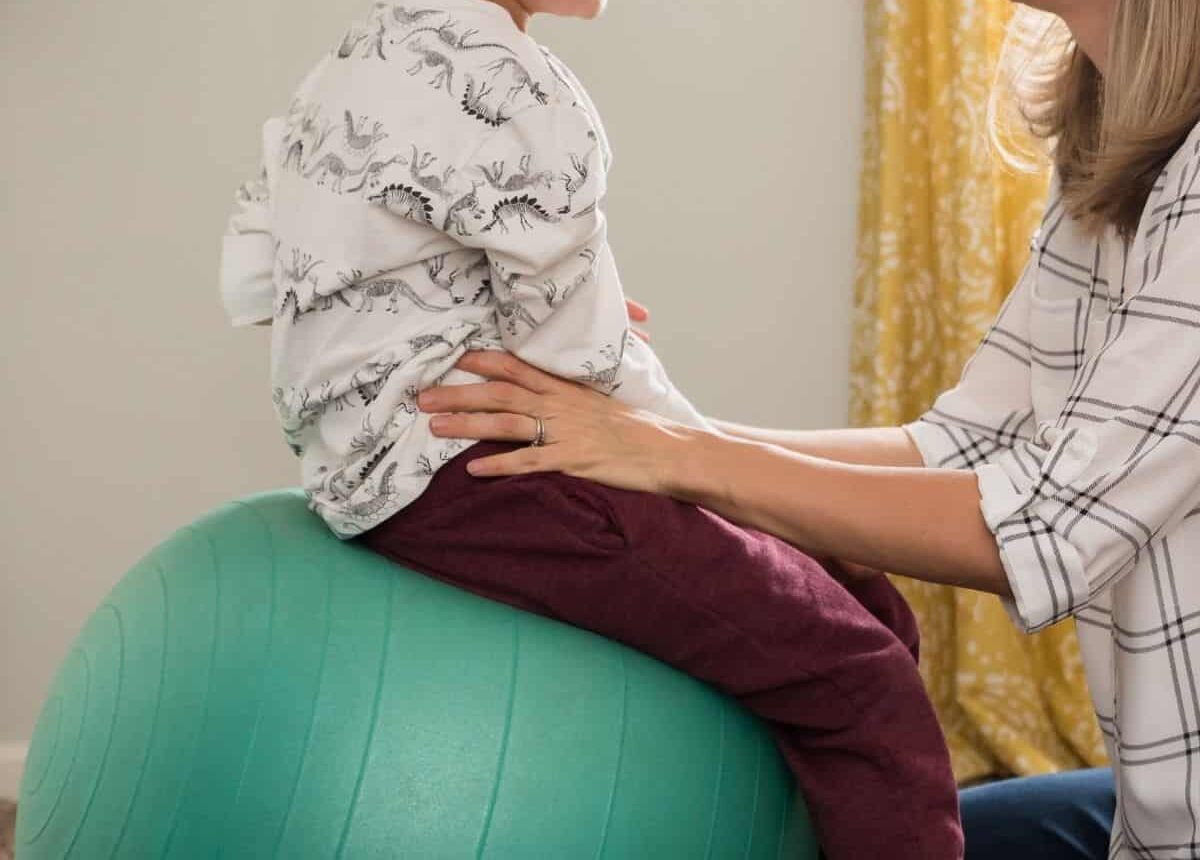
#3. Play in a Sensory Bin
- Sensory bins are my favorite. Pull out a large storage container, water table, or tub to fill with different materials that could range from cotton balls, water beads (make sure they’re the edible tapioca kind like these), pom poms, sand, dry beans, cloud dough (flour + oil), or even just bubble filled water. Get a ton more sensory bin ideas.
#4. Explore a Sensory Bag
- Get a sealable plastic bag and fill it with hair gel, add some small items or toys like coins, paperclips, vinyl stickers, sequins, buttons, bouncy ball, etc. Seal the bag, making sure all extra air is out, and add heavy duty tape to make sure you child doesn’t accidentally open. Then, press flat and let your child look for the hidden objects. This is great for their fine motor skills too! (Get a full tutorial here).
#5. Shake a Sensory Bottle
- Another easy DIY, you can take an empty water bottle and fill it with water, oil, or a mix, add some food coloring, glitter, and more small objects. Toddlers like to watch the water swirl and shaking it gives a lot of give sensations that are calming too. If you want to get a kit that has everything you need in it. Check this out.
#6. Soar like an airplane
- Did you know this old school parent/child game packs a ton of sensory input? You’ll be stimulating those vestibular and proprioceptive senses in a big way. For kids that are scared of movement, this might be too overwhelming though so use extra caution.
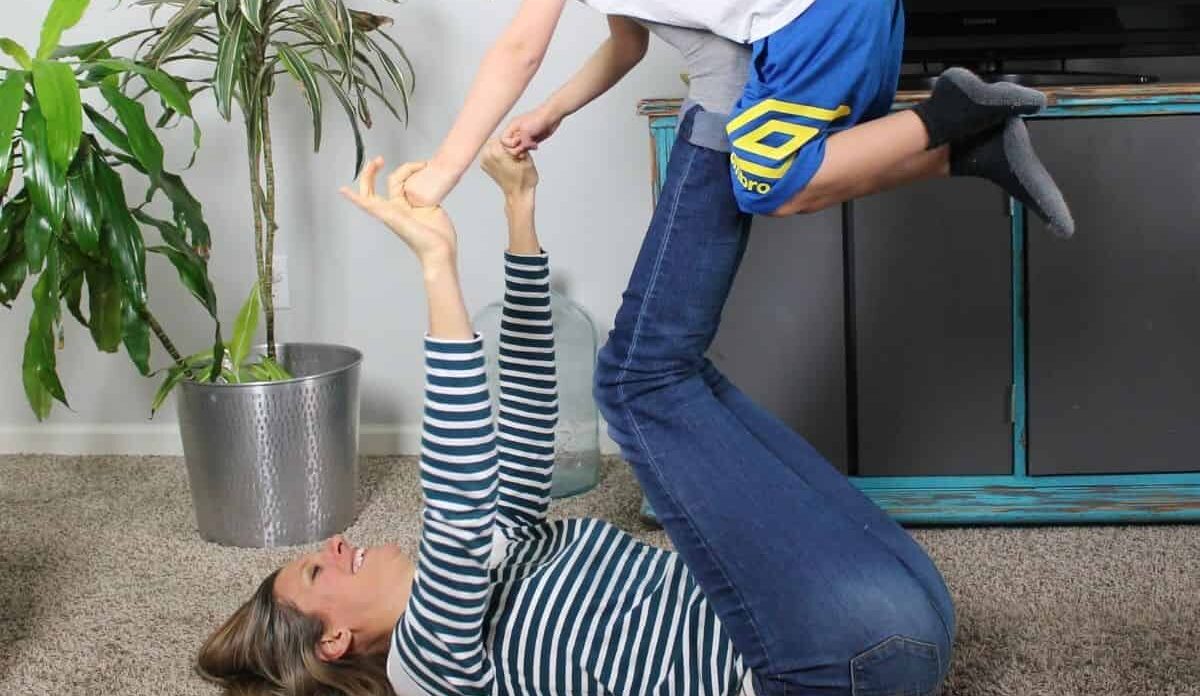
#7. Knee Rocking Horse
- If the airplane is too much for your toddler, then bouncing them on your knee or while laying on your back like I am in the picture above might be tolerated better. Remember start with small steps!
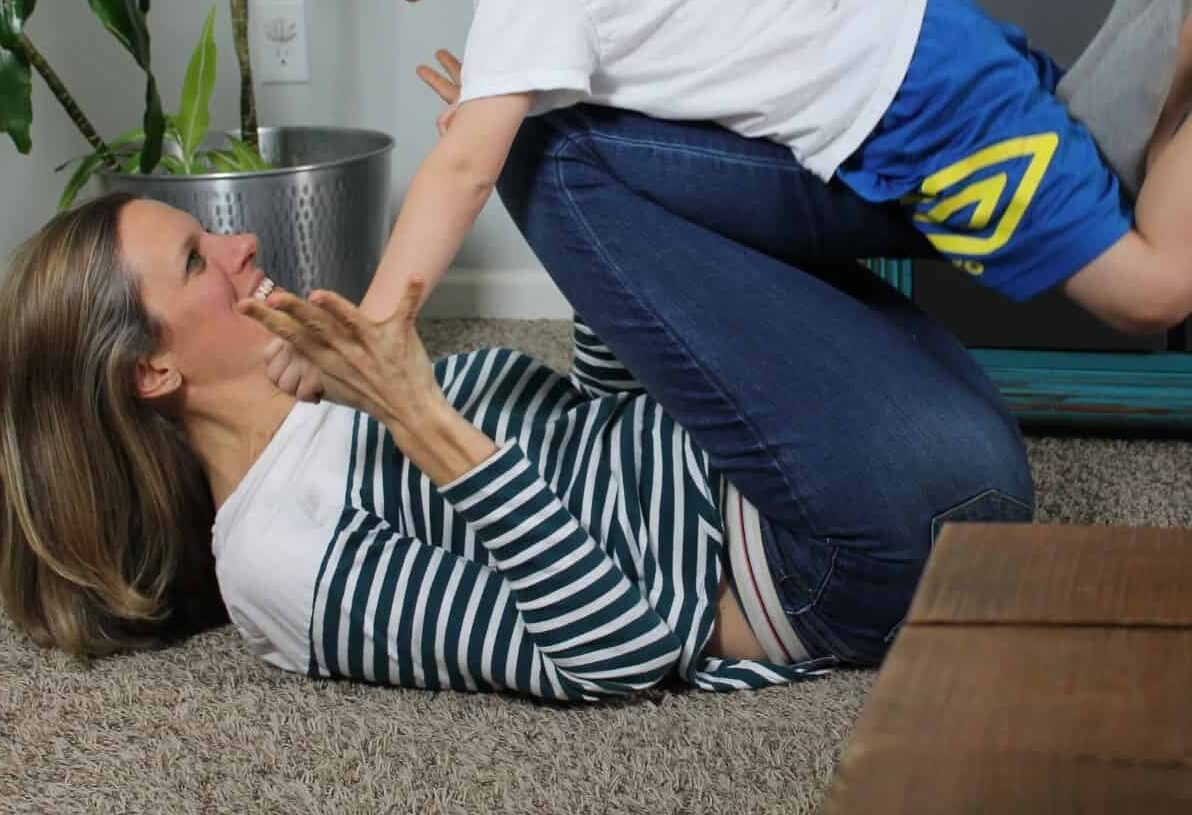
#8. Swinging
- Swinging is a classic sensory activity, but think beyond the average playground swing, although they’re great too! If you have options in your back yard, tire swings and these newer spider net swings allow for swinging in a large circle which gives different types of valuable sensations. I also love to use a blanket if you have another adult around. Have your toddler lay in the middle, each adult grabs two corners and swings back and forth.
#9. Rocking Back and Forth
- There are lots of different ways for toddlers to rock back and forth. Think about rocking chairs, gliders, rocking horses, or these cute little egg chairs that stack up easily and are the prefect size for toddlers. You can face your toddler and match up your feet so they’re touching, grab hands, and rock back and forth.
#10. Hopping on Stepping Stones
- My kids just got these stones for Christmas and they were a huge hit! They might be a little bit challenging for toddlers to balance on, but it’s great practice for them. Using a low to the ground balance beam or even a rope laying flat on the ground can work on their balance too!
#11. Pushing a Push Toy or Shopping Cart
- Pushing and pulling activates are proprioceptive sense and can be very calming to lots of toddlers. If you have a push toy or toy shopping cart they work perfect, but you can even take it a step further and load them with books for extra weight and input.
#12. Carry or Use a Weighted Lap Pad
- A weighted lap pad is simply a small pillow or stuffed animal that’s heavy. You can make one yourself with dry beans or plastic pellets, but lots are available ready made too. Check out my whole guide on weighted lap pads here. They’re perfect for kids that like to crawl into tight spaces, and can help kids that have difficulty calming down.
13. Play with Scarves
These scarves are super cheap, but you can also make play scarves from fabric scraps. Toddlers with jump in them, cover their face, and pull them out of containers like an empty tissue box.
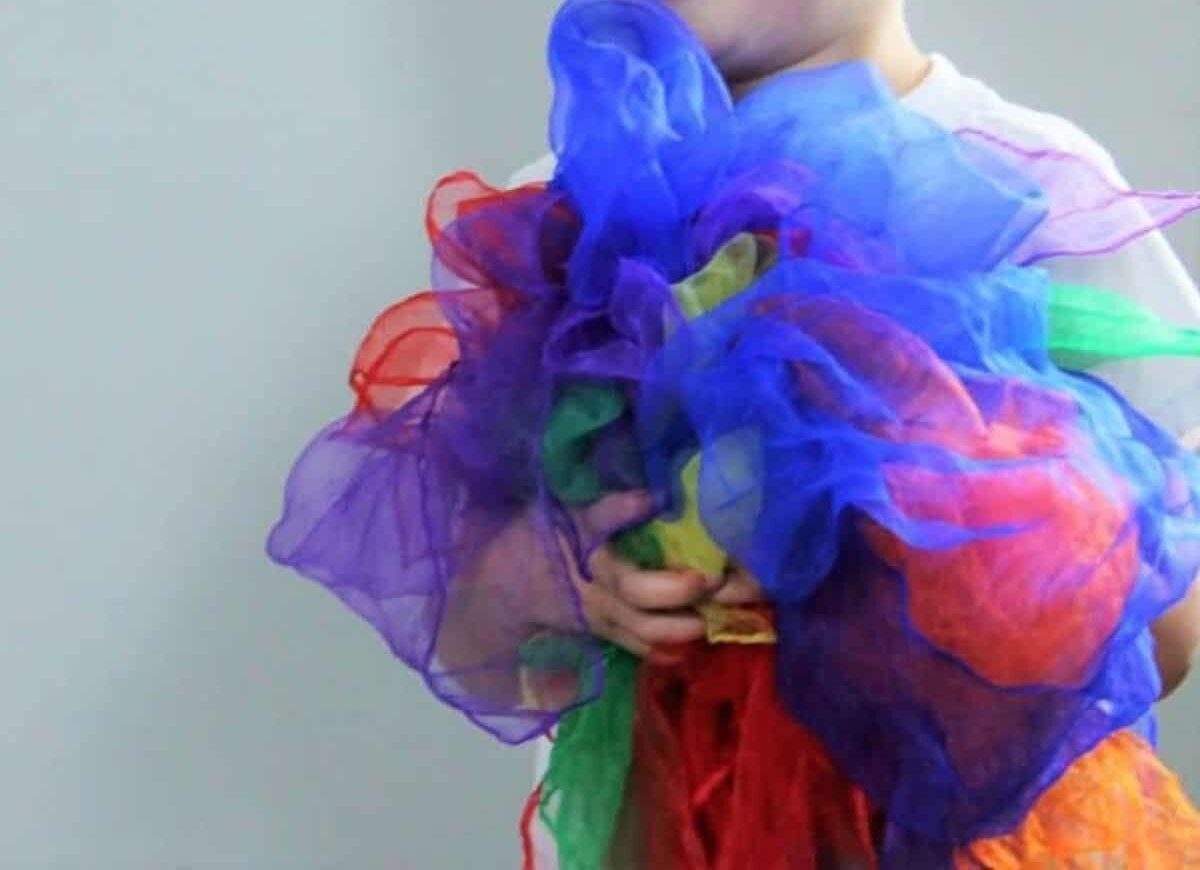
#14. Jump on Pillows
- Pull the couch pillows off and let your toddler jump and crawl all over them! Don’t over think this, it’s very simple and besides all of the sensory input they’ll get from climbing, crashing, and jumping, they’ll also be entertained for a while. Besides the pillows, you may want to allow jumping on the couch, their bed, or on a small trampoline!
#15. Smell Spices
- Either when you’re cooking or just for fun, invite your toddler to smell different spices from the cabinet. Be careful not to label any of the smells as good or bad, but instead “big” and “small” smells. This smelling activity will help them understand smells in a new way which can help with eating new foods too.
#16. Kick a Ball Back and Forth
- Kicking a ball isn’t something all toddlers will naturally seek out, but it gives a lot of proprioceptive feedback and works on their gross motor skills. Plus, they have to use their vision, hand-eye coordination, and balance to kick the ball back to you. Use a larger ball so it’s an easy target for them to kick.
#17. Climb Up the Slide
- I know this goes against every playground’s rules, but for toddlers, focus on small slides with very close supervision. Because climbing up the slide, and then sliding back down, gives tons of fantastic sensations to the sensory system. It also helps with motor planning and core strength.
#18. Walk on Bubble Wrap
- Grab some painters tape and stick some bubble wrap to the floor for your toddler to walk and jump on. Lots of different senses are getting input here: auditory (popping noise), jumping (proprioceptive), tactile (feeling of bubbles under feet.) If you want to see an example, check this out.
#19. Feel and Find Mystery
- A great way to work on your child’s tactile processing is to put some simple hidden objects into a box or bag and have them feel for the one you requested. It goes something like this… You place 3-4 random objects in a box with a hole cut into it. Think about a cup, car, ball, etc. Easy to identify. Ask you toddler to put their hand in and find the ball/cup/car. Voila! Find more feel and find ideas here.
#20. Toss Bean Bags
- Throwing bean bags gives extra input because they’re a little heavy, this is generally calming and organizing to the sensory system. Tossing them back and forth or having your toddler stand behind a line and throw them into a bucket or laundry basket is a great sensory activity either way. You can snag a set of bean bags here if you don’t have any.
#21. Climb Through a Tunnel
- Climbing up, through, or over things is one of the best sensory activities, in my opinion. It helps kids do all kinds of things like using both sides of their body together and often cross midline, both important skills for later learning. Create a tunnel out of cushions or use a popular pop up tunnel like this, or my favorite a fabric tunnel.
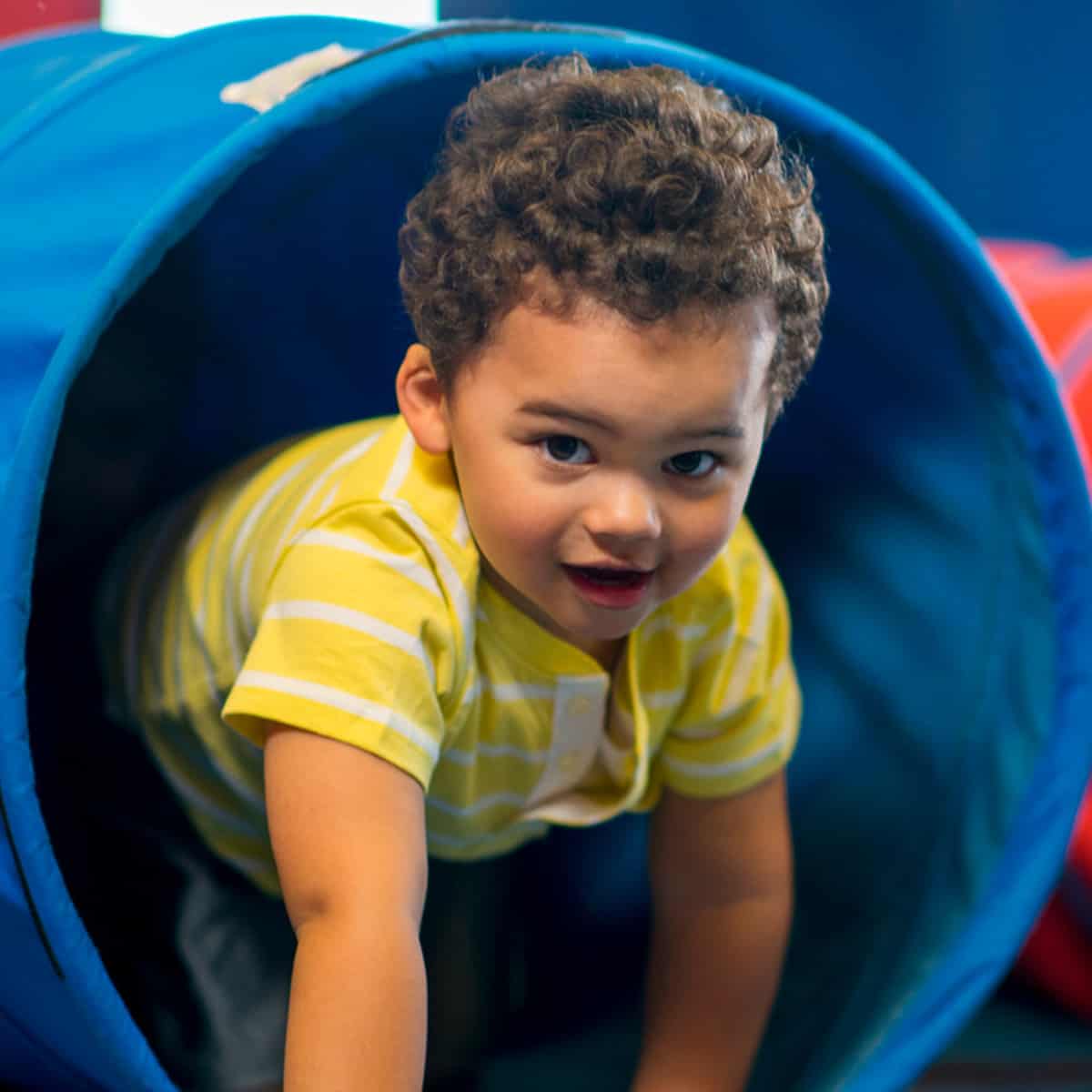
Never Force Sensory Activities with Toddlers
Most of the time, your toddler will probably love the sensory activities you provide for them, they’re designed to explore. But, if your toddler every doesn’t want to participate, it’s critical to never force them to. The way a child experiences sensations is completely unique to them, and while your intentions are in the right place, making them try something can cause harm to their sensory system.
However, that doesn’t mean that if your toddler doesn’t want to play in the finger paints that you shouldn’t encourage them, demonstrate, and try to make it fun. More than that though, I’d want you to try and make it simpler for them.
With the finger paints, that could mean offering a paint brush instead. And, it also means to keep trying the activity. We always want to help toddlers break down any sensory sensitivity they may have.
21 Sensory Red Flags You Might Be Missing in Your Toddler…
If you were reading through here and wondering if your toddler might have some sensory “issues” or needs, but aren’t sure, then grab my free printable: 21 Sensory Red Flags You Might Be Missing.
While sensory is unique and there are tons of different signs, I’ve compiled some of the most common and misunderstood. Click here to get the free printable in your inbox!
More Sensory Activities for Toddlers
37 Sensory Toys to Help Kids Learn, Communicate, and Calm Down
Sensory Tricks to Help Your Kid Fall Asleep Fast!
Stress-Free Cooking with Toddlers and Kids: Recipes, Tips, and Activities
8 Things You Can Do When a Toddler Refuses to Eat
Alisha Grogan is a licensed occupational therapist and founder of Your Kid’s Table. She has over 20 years experience with expertise in sensory processing and feeding development in babies, toddlers, and children. Alisha also has 3 boys of her own at home. Learn more about her here.
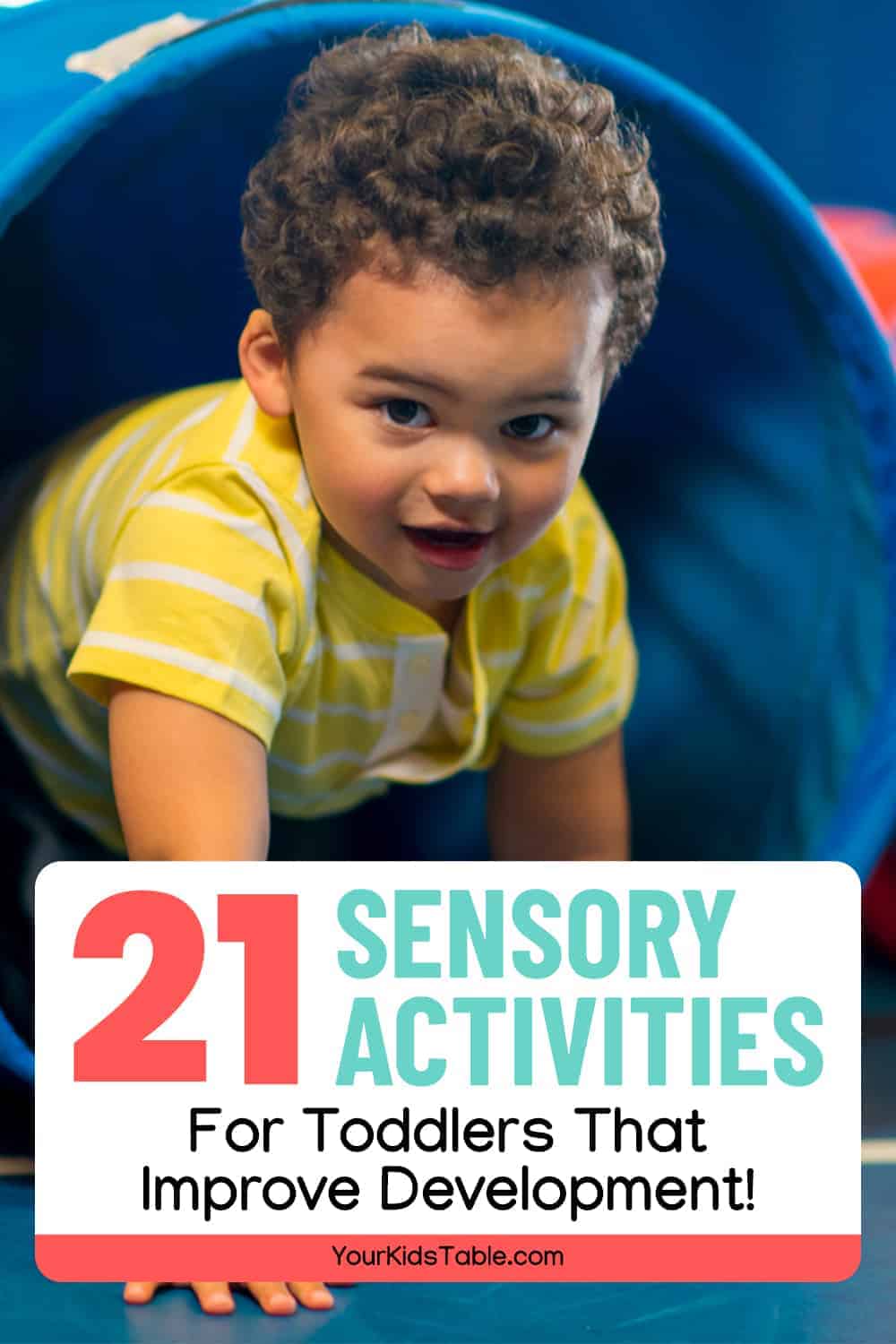
My grand daughter I believe has some sensory issues. She is 2.5 years old and won’t eat any textured food, she walks around tapping on everything. She does not like to play with other people. I need help. What can I do?
Hi Michelle,
Your granddaughter is lucky to have you! It sounds like both picky eating (based on texture) and sensory processing difficulties (likely the cause of the textural aversions) are both happening. We have free workshops to start understanding both. Check out the picky eating one and the sensory one and I am happy to answer questions!
Best,
Laura
Your Kid’s Table team member
My 2.5 yo loves soap! She will carry around a soap bar for hours, just as she goes about her day, stopping to sniff or rub it occasionally. And gooey hand soap is so squishy and fun, she can spend 10 min just squishing it all over her hands and arms.
Lip balm/ chap stick is another favourite, and is perfect to pull out in waiting rooms etc. As long as you are happy to get funny stares as you sit next to a toddler grinning with very well moisturised lips, chin and cheeks. It gives great sensory input for smell, taste and feel and I find it helps calm her. If it gets on clothes, a bit of dish soap gets it right out.
My 4 yo son has ASD and SPD, and all the sensory “awareness” I have gained as a result has helped me understand and appreciate my daughter’s sensory needs too, despite her having no such diagnosis.
Oh Cyndall, I just love that. It’s so cool that you can see those things and that you let her do these things that might seem a little out of the norm – because the truth is, does it really matter if she carries around soap? No, of course not. But allowing her to do so helps keep her sensory system in balance!
Love the chapstick idea, genius!